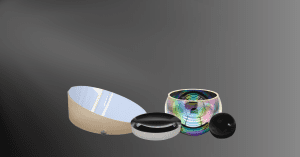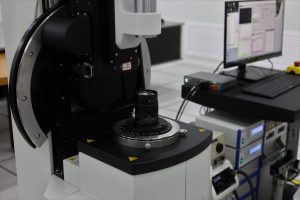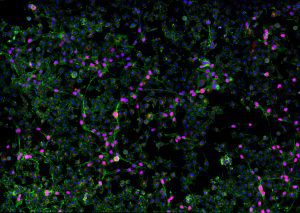Key Takeaways
- Spectrometer optics involve designing components for measuring light intensity, including the Czerny-Turner spectrometer design and the utilization of diffraction gratings.
- Spectrometer design encompasses essential elements like the Czerny-Turner configuration and the integration of diffraction gratings.
- The Czerny-Turner design, featuring toroidal mirrors and diffraction gratings, enables asymmetrical optimization for reduced aberrations.
- Performance specs such as wavelength range, resolution, slit size, and detector type are critical for spectrometer selection and application.
Introduction to Spectrometer Optics and Its Diverse Applications
Spectrometer optics is a specialized field that involves measuring light intensity by using a spectrometer to separate light by wavelength. Spectrometers find applications in various fields, ranging from studying distant galaxies to analyzing proteins in biochemical research. Avantier Inc. boasts a skilled engineering team proficient in designing optical component for spectrometers for research, industrial, medical, and defense applications.
Fundamentals of Spectrometer Design
The basic structure of an optical spectrometer comprises an entrance slit, a diffraction grating or prism, and a detector. Routing optics guide the light through the spectrometer, from the entrance slit to the diffraction grating and then to the exit slit and detector. To eliminate noise, filters are employed in spectrometers with a wide range. The optical system dissects light into its constituent wavelengths, creating spectra, while the detector measures the light intensity as a function of wavelength.
Precision Engineering for Optimal Performance
Each component of a spectrometer must undergo meticulous engineering to minimize aberration, control stray light, and achieve superior resolution. Different applications demand specific balances of sensitivity and resolution, leading to various spectrometer designs. Some popular designs include the Echelle, Czerny-Turner, Littrow, Ebert-Fastie, and concave aberration-corrected holographic grating configurations. The choice of spectrometer design depends on the intended application and the wavelength range to be analyzed, such as UV Vis or NIR. Among these, the Czerny-Turner design is widely used and merits closer examination.

Exploring the Czerny-Turner Spectrometer Design
The Czerny-Turner design is a robust configuration based on two toroidal-shaped mirrors. Light enters through an entrance slit and is collected by the first toroidal mirror, where it is collimated. The light then travels to the diffraction grating and finally to the second toroidal mirror, which focuses individual wavelengths through the exit slit and onto different positions on the detector. By rotating the grating, the wavelength range projected onto the detector can be altered, and wavelength resolution can be adjusted by changing the focal length or switching out gratings.
One of the strengths of the Czerny-Turner design is its asymmetry, allowing engineers to optimize the system for specific applications. When measuring one primary wavelength or a wide range of wavelengths, holographic gratings can be designed to cancel out optical aberrations, thereby reducing multiple dispersions and unwanted reflections. Additionally, this configuration provides better coma correction compared to symmetrical designs.
Selecting Spectrometer Specifications
The performance of an optical spectrometer is defined by various specifications, including wavelength range, optical resolution, slit size, sensitivity, timing and speed, and detector type. The desired spectral range determines the appropriate grating size, with finer gratings providing higher resolution but limited flexibility compared to broadband gratings. Slit size affects resolution, with smaller slits offering optimal resolution at the cost of reduced sensitivity and throughput. To maximize sensitivity and throughput, larger slit sizes can be used, except in cases with excessive light. Slit kits with alternative sizes can be utilized for adjusting slit sizes during spectrometer use.
Sensitivity also depends on high throughput and a high quantum efficiency detector, especially important for fluorescence spectroscopy. On the other hand, Raman applications require a balanced consideration of resolution and sensitivity. The choice of configuration and detector impacts the speed of the spectrometer, with linear detector arrays offering faster performance compared to monochromator designs.
Avantier’s Expertise in Spectrometer Optics
Manufacturing high-performance optical components requires sophisticated production devices, state-of-the-art metrology, and rigorous quality control. With over two decades of experience in North America, Avantier Inc. possesses unique expertise in crafting high-precision optical instruments. The company’s cutting-edge metrology equipment ensures that every mirror, grating, and optical component meets and exceeds all relevant standards.
Avantier Inc. stands behind its products and provides detailed specifications for each component. With a vast lineup of in-stock components, they can assemble various spectrometer configurations promptly. For custom requirements, the company is more than willing to create tailor-made solutions. Customers can reach out to Avantier Inc. for a consultation to discuss their use cases and specific requirements.
Conclusion
Spectrometer optics and design play a vital role in a wide range of scientific, industrial, and medical applications. Avantier Inc. has emerged as a leading provider of advanced optical solutions, leveraging decades of expertise and state-of-the-art technology to meet the diverse needs of customers. With a commitment to precision engineering and customer satisfaction, Avantier Inc. continues to pave the way for cutting-edge spectrometer optics and design. Please contact us if you’d like to schedule a consultation or request for quote on your next project.
GREAT ARTICLE!
Share this article to gain insights from your connections!




